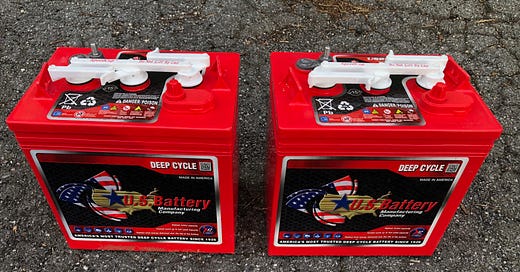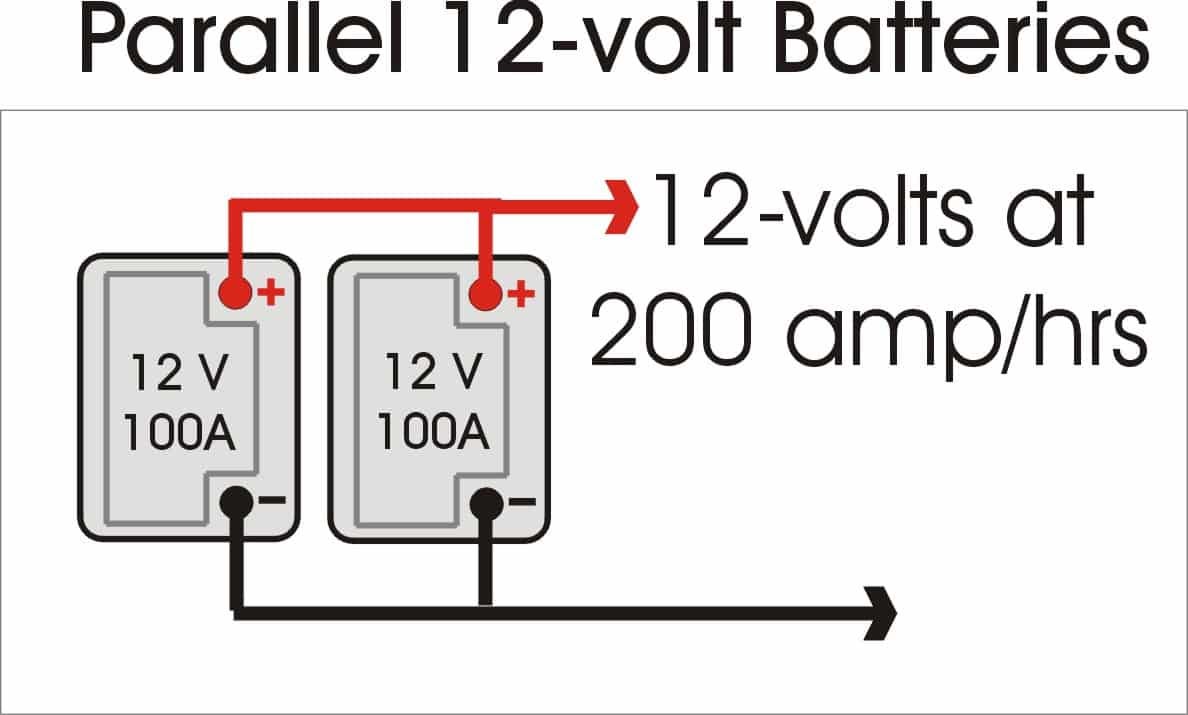Mike,
Is there an advantage to having two 6-volt batteries vs two 12-volt batteries given the same available amperage? Cost, weight, charge time?
Also, I have read that some RV owners have a system with two 12 volt batteries, but only draw from one at a time - using the second as a backup. Any good reason to consider this option? - Sharon M.
Dear Sharon,
The key thing to know is that 6-volt FLA (Flooded Lead Acid) batteries are always “Deep-Cycle” batteries rated for a 20-hour discharge rate, while many of 12-volt FLA and AGM (Absorbent Glass Mat) batteries you get for your RV will be “dual-purpose” that are also rated with Cold Cranking Amps (CCA). This allows dual-purpose batteries to supply the hundreds of amps of current needed by a starting motor on a gas or diesel engine, but they’re not optimized for deep discharge cycles day after day.
Compared to a dual-purpose battery, a deep-cycle battery can get discharged and recharged many more times without any significant wear and tear. The thicker plates inside of a deep-cycle battery are tougher and can withstand more charge/discharge cycles than your typical dual-purpose battery.
What about weight?
And deep-cycle batteries tend a lot heavier that dual-purpose batteries since they have much thicker plates. And that’s what allows them to be discharged to lower levels without damage compared to dual-purpose batteries.
But deep-cycle FLA batteries do need to have water added at regular intervals, which could be once a month. And you do have to contend with potential sulphuric acid damage to clothing and body parts.
What about adding a switch to 12-volt batteries
There’s really no advantage to using a switch for a pair of 12-volt batteries to pick battery A or battery B except that you can mix batteries of different capacities and ages.
More info…
For a great article from Abyss Battery on the differences between Deep-Cycle and Dual-Purpose batteries please click HERE.
But the real winner of charge/discharge cycles are Lithium batteries. I’ll soon do a full comparison article on cost per cycle for all battery technologies. But for now, at least, the clear winner is Lithium Iron-Phosphate technology for RV house batteries. Just be prepared to pay extra for that technology.
Let’s play safe out there… Mike








I would argue about the ‘greatness’ of lithium batteries, at least for golf cart batteries. I spent an extra $2000 for RoyPow lithium batteries when I bought my golf cart 6 months ago. Twice it it has died when the battery gage says 80%. I called my dealer and he refuses to look at it. ( Ref Google review for Golf Cart CROSSING in Pharr, TX) He says there is nothing wrong and the solution is to plug it in at least every other day. I could have saved $2000 for that RoyPow battery and plugged in my cart every day. I contacted RoyPow and asked for another gage but got no reply. Maybe if service went with the sale I might not be so disappointed. I certainly can’t recommend a RoyPow battery to anyone.
Mike, you said that deep cycle batteries have thicker plates and that’s what allows them to be discharged to lower levels without damage compared to dual-purpose batteries. I have read that golf cart batteries can be discharged 50% to 80%. I have 6 golf cart batteries in my 5th wheel that have never gone below 50%. Can I discharge them to 80%?